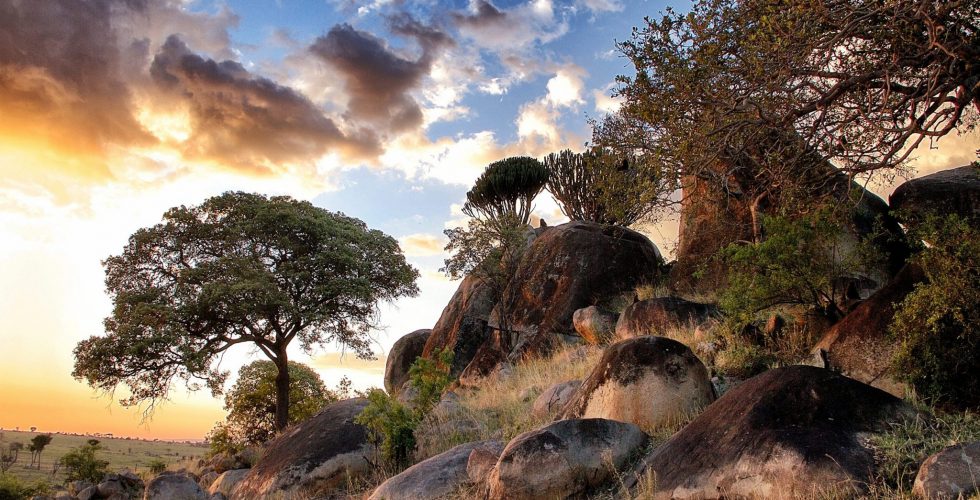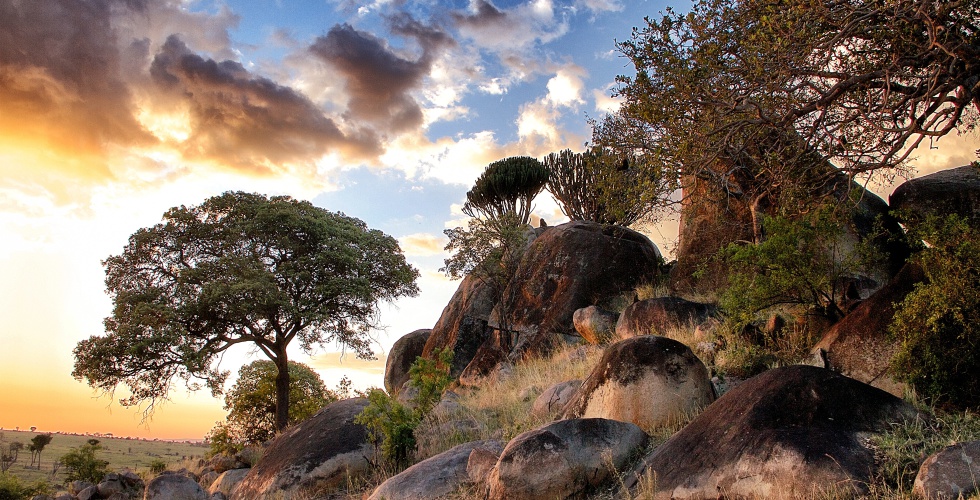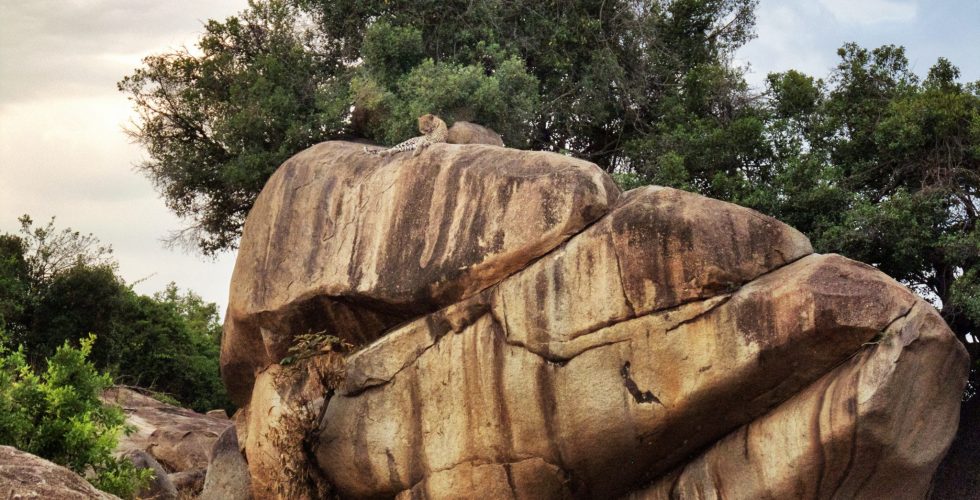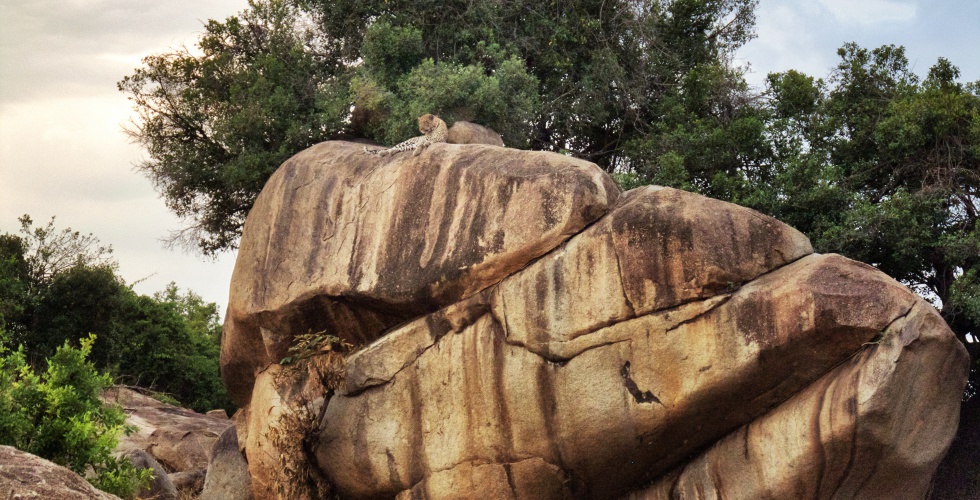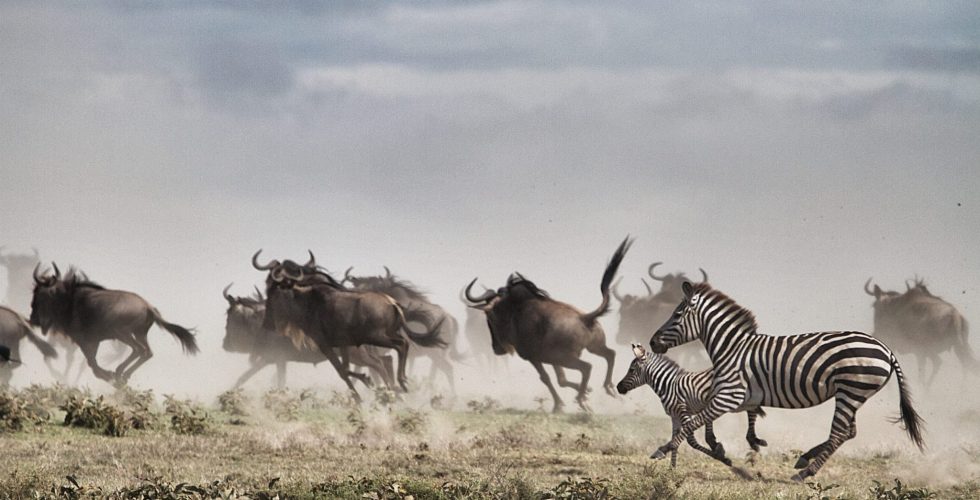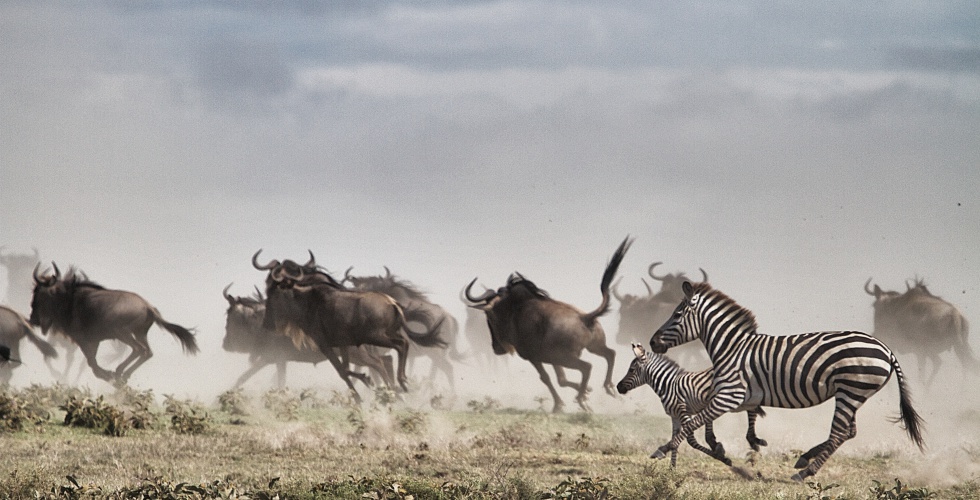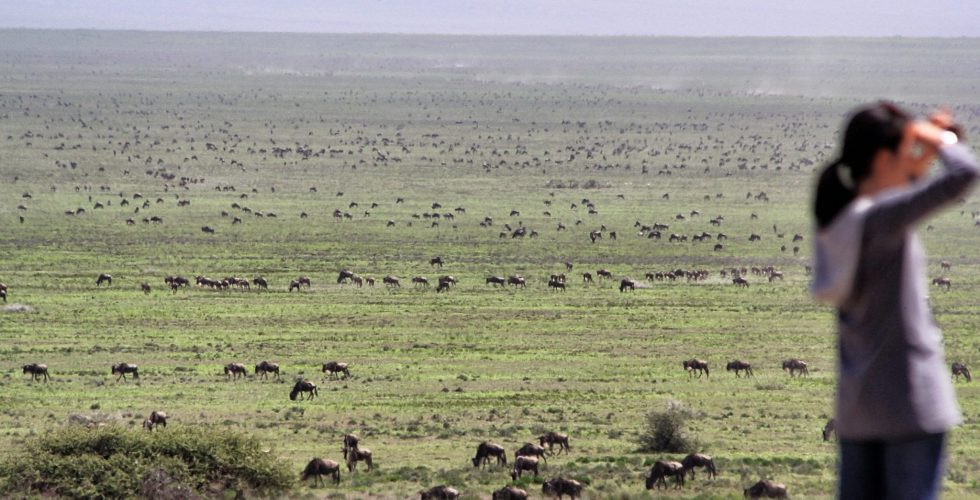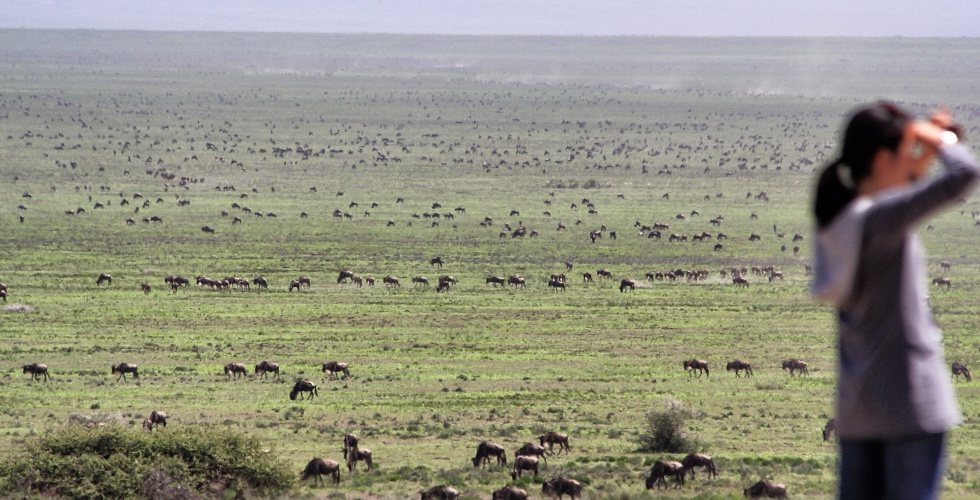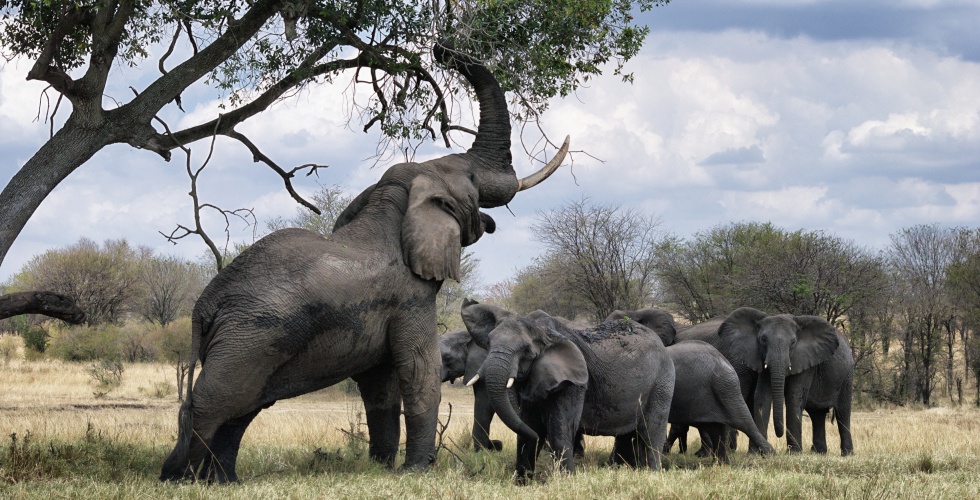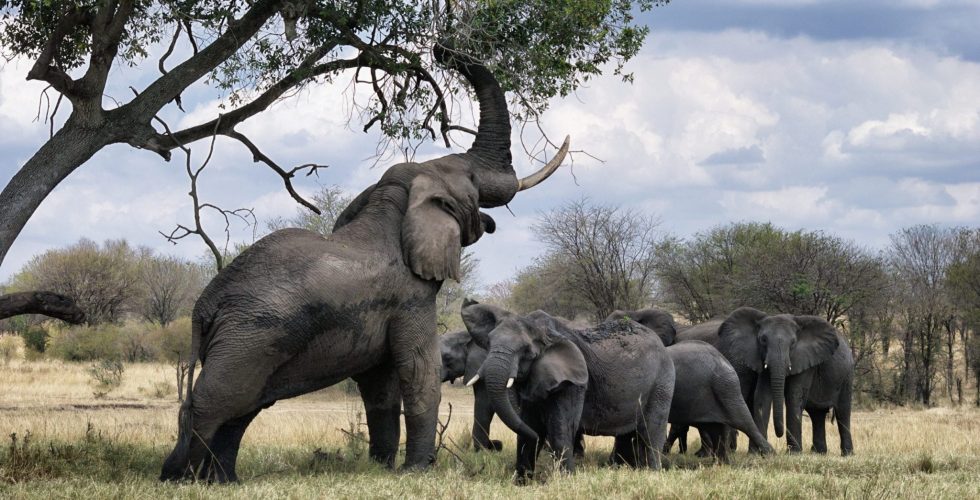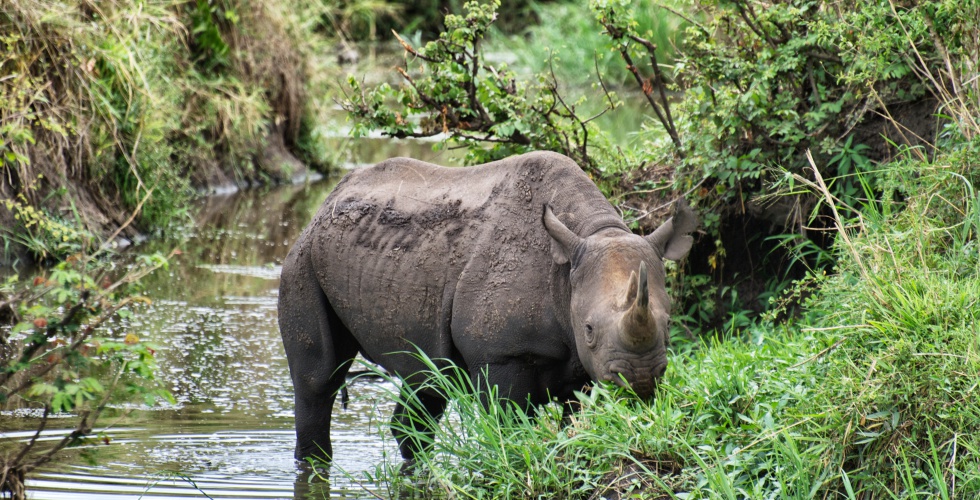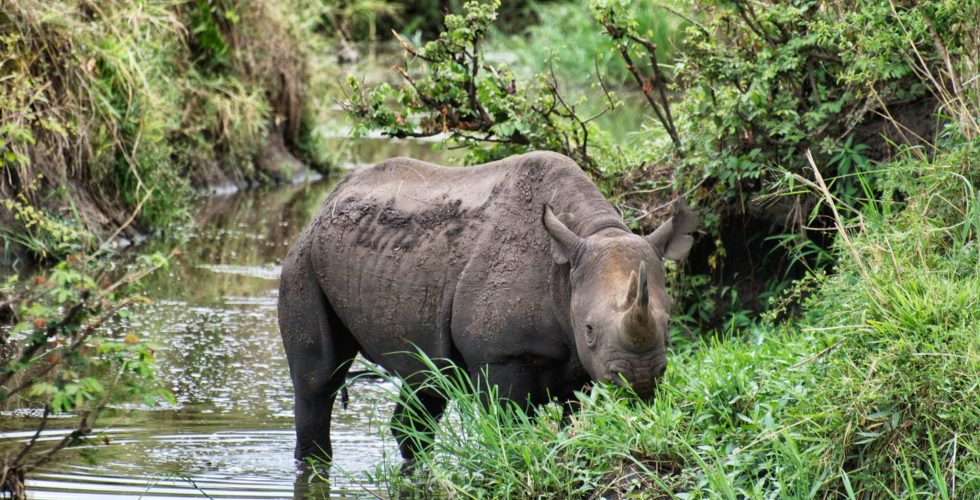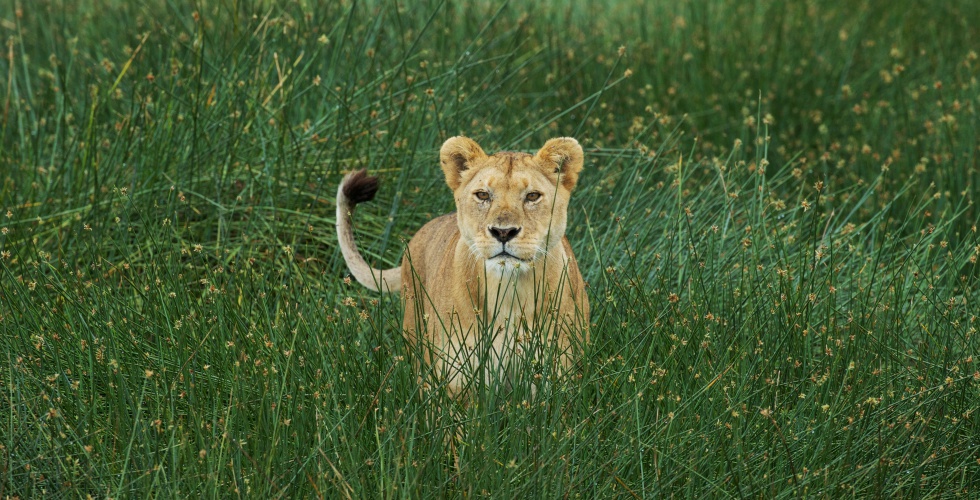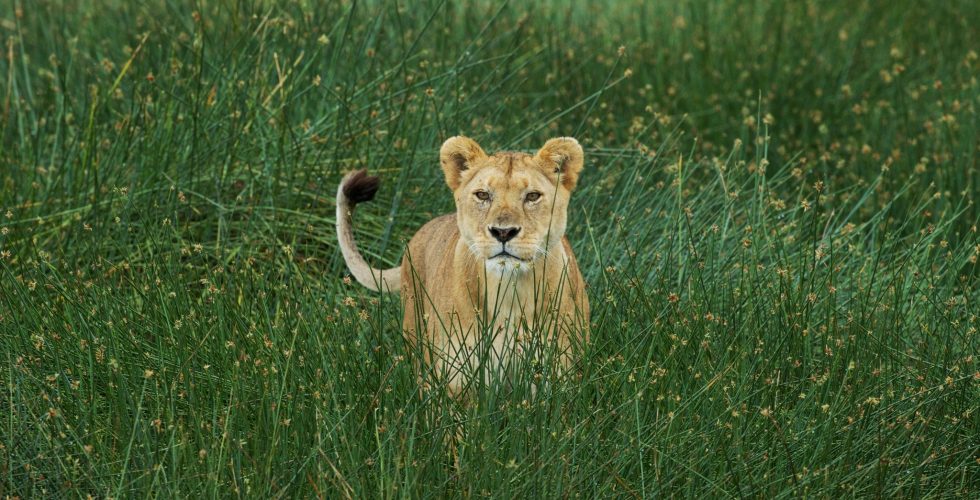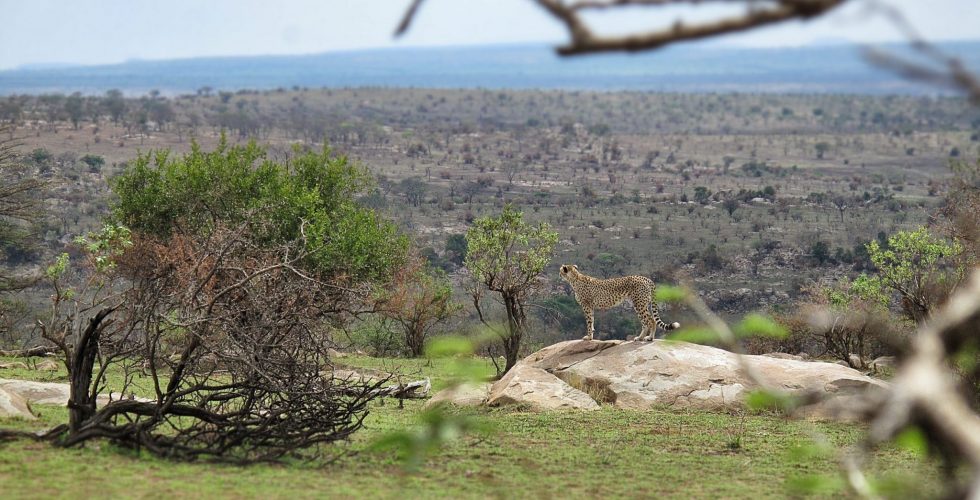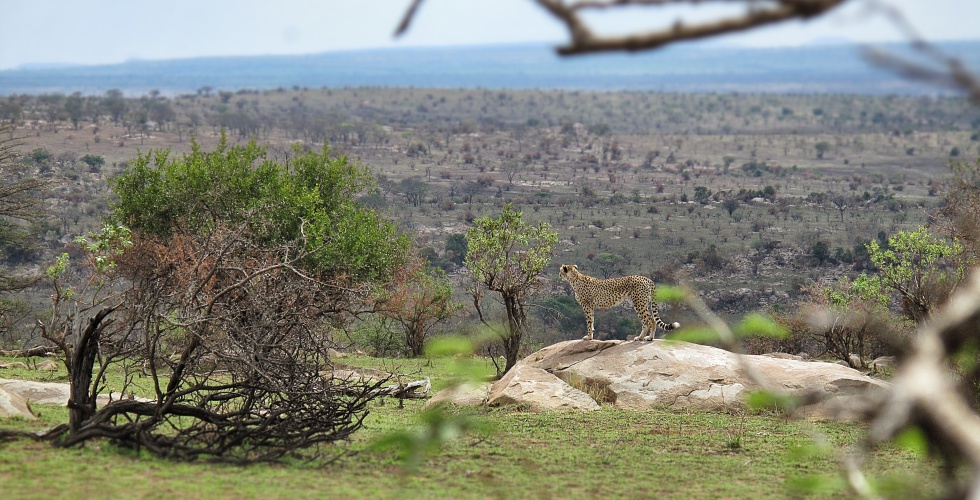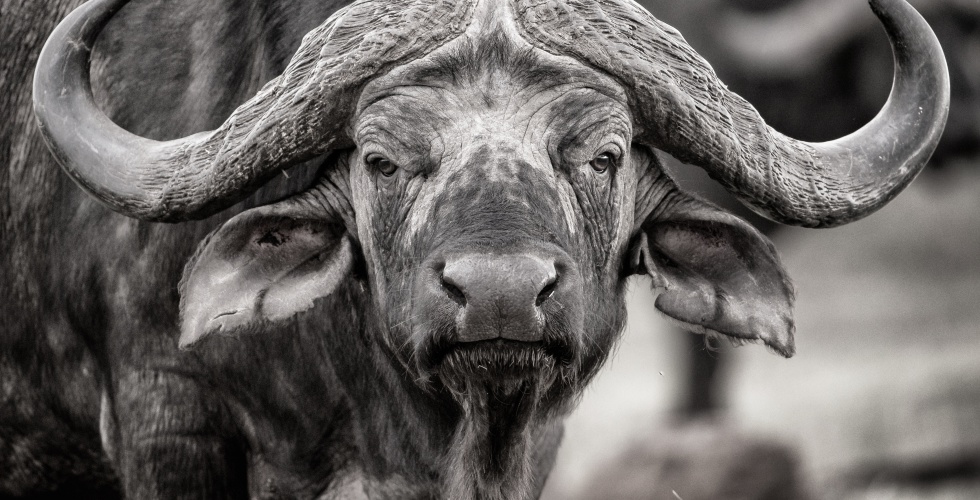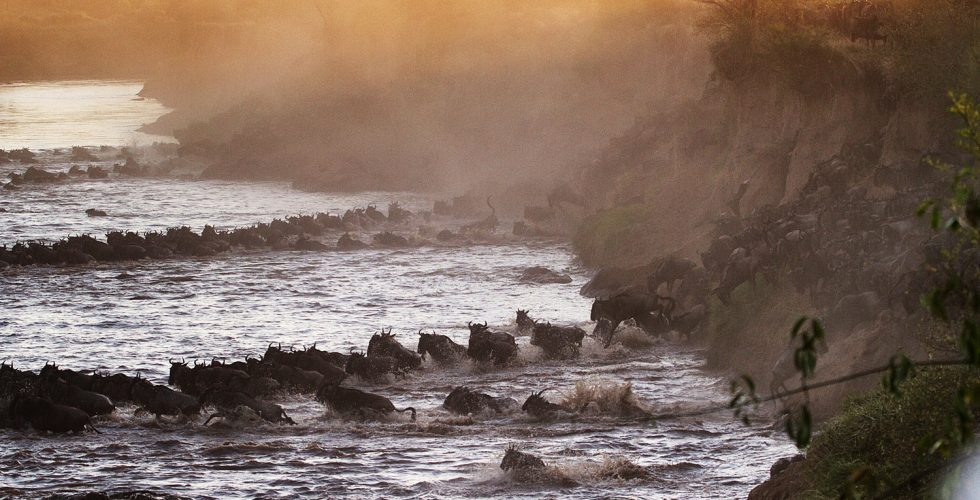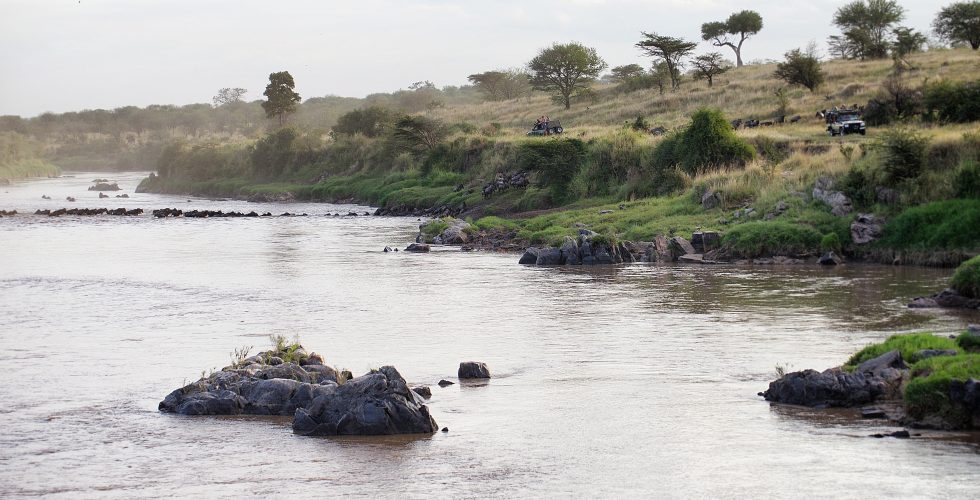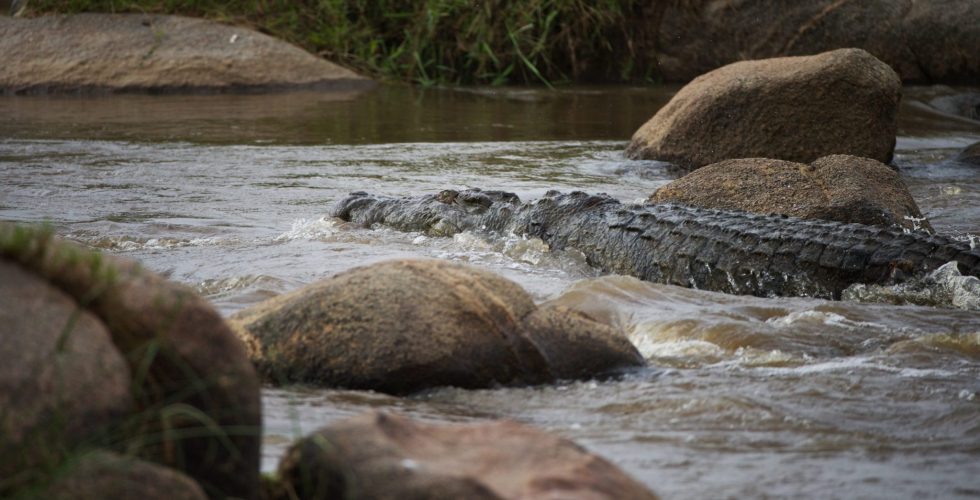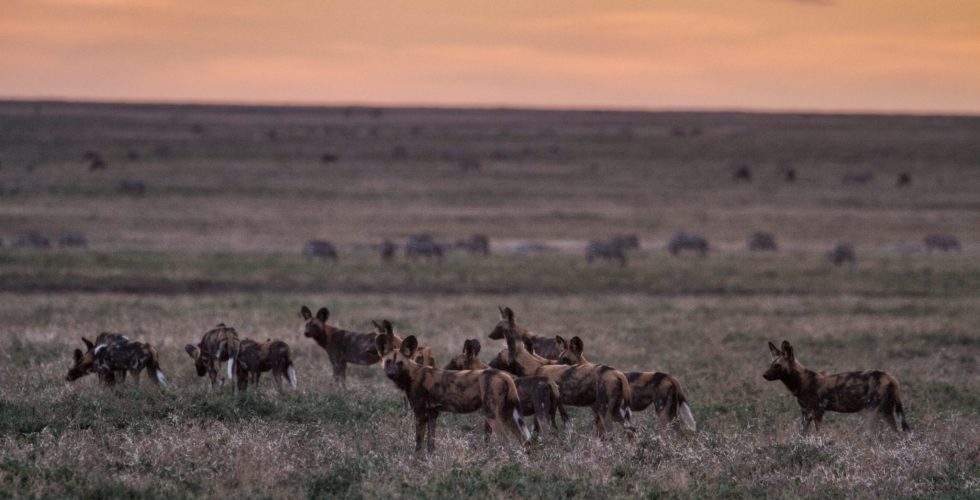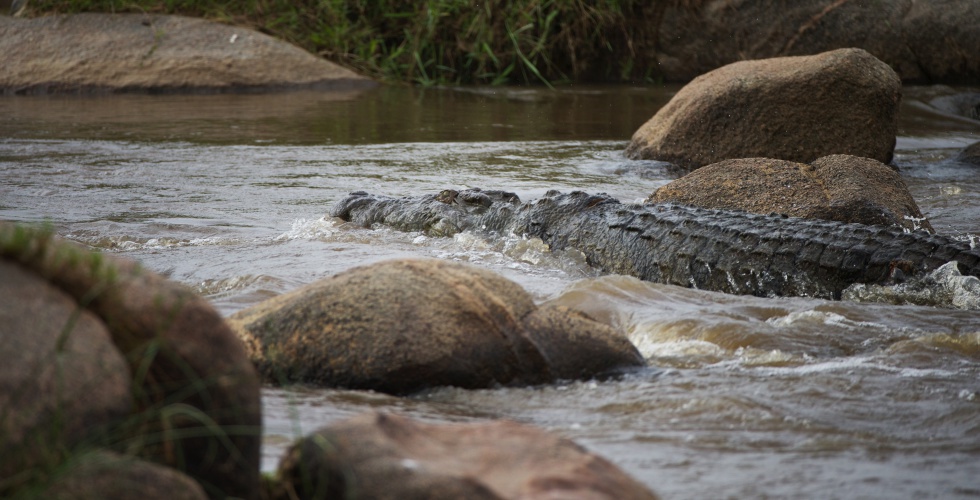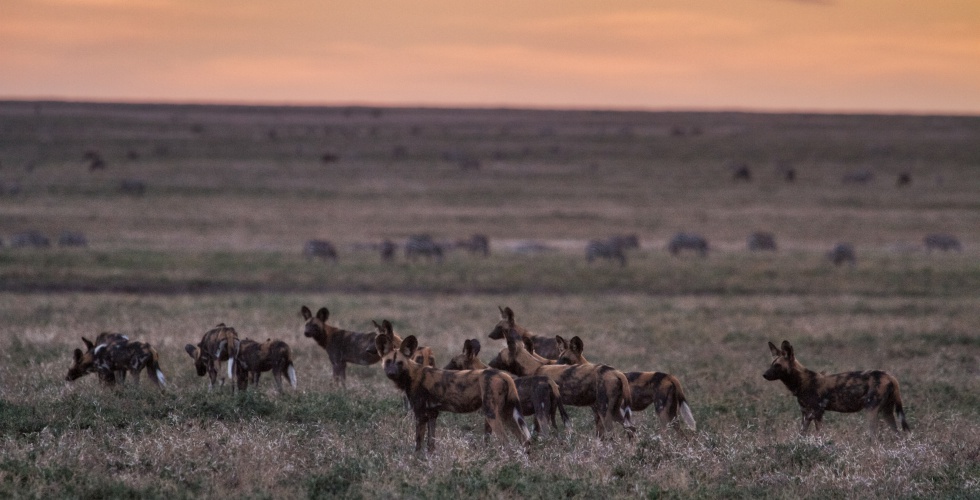SERENGETI NORTH
From July to mid-November, we are a mere 2 kilometres from the Mara River – a stone’s throw from the time-worn crossing points that the herds return to every year.
Our camp is often steeped in a swarm of grunting gnus for days on end as they graze down the grass around the tents, and the hum of energy is palpable as they start to stampede toward the river. Watching them explode across the water is deeply, fundamentally and primordially thrilling: the dust, the thundering noise, the panic and trauma as they struggle against the current, the crocodiles, and their own seething masses – all resonates with a primal core inside us, that instinctively quickens at the fight for life.
SERENGETI SOUTH
In mid-December, we set up on the southernmost extreme of the short grass plains. We have access to a million acres of a stunning acacia-dotted conservation area – an idyllic environment for walking safaris. To the south is Lake Eyasi: home to our Hadzabe and Ndorobo guides, who have centuries of bush craft at their fingertips and can open your eyes to the secrets of this beautiful space.
Dramatic savannah storms sweep in nourishment and new life, and an innate primordial urge pulls the wildebeest to the site of their origins to reproduce. This is a time when the plains literally come to life for the birthing season. Millions of wildebeest and zebra dominate the landscape, seeking out the fresh green grass that follows the first rains – and to give birth to their young.
A few kilometres away, our mobile camp Kusini has an incredible vantage point of the vastness of the plains. Ancient trails weave the migration past and through the camp. Given the sheer numbers of plains game and their brand new babies, the big cats are never far behind for an easy meal: this is prime cheetah country, and there is ample opportunity to watch these impressive predators in action.
![]()
![]()
![]()
18
FEET HORN TO HOOF
![]()
![]()
![]()
40000
MUSCLES IN AN ELEPHANT’S TRUNK
![]()
![]()
![]()
![]()
6-7
KG EATEN PER DAY
![]()
![]()
![]()
![]()
3000
LIONS IN THE SERENGETI
![]()
![]()
![]()
500
BIRD SPECIES

